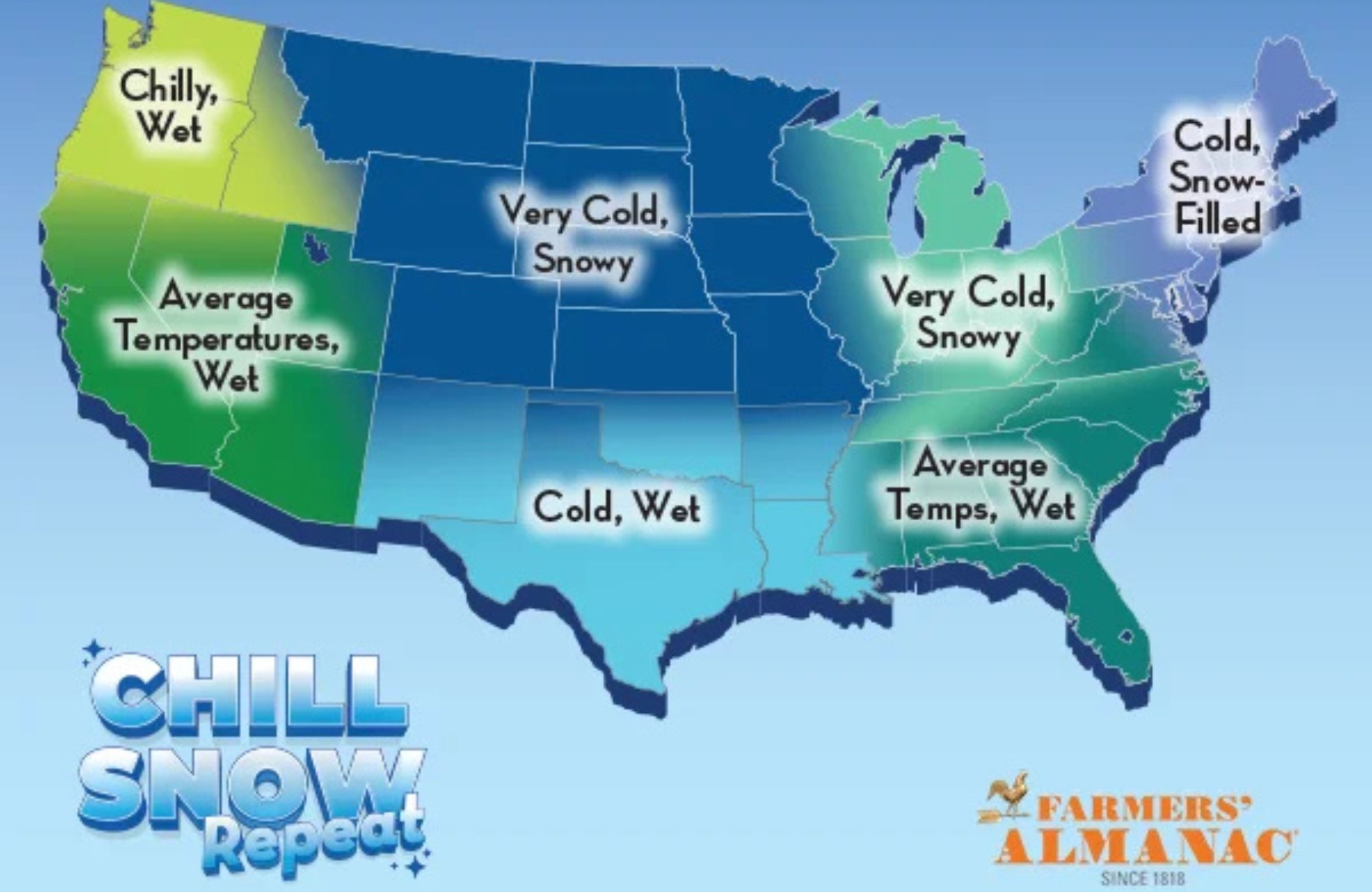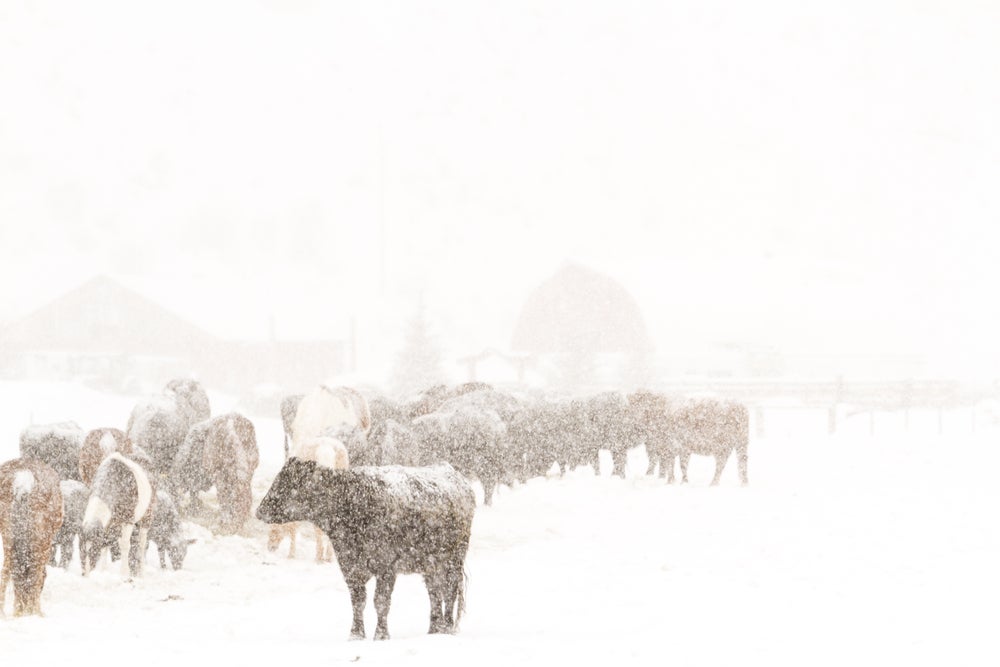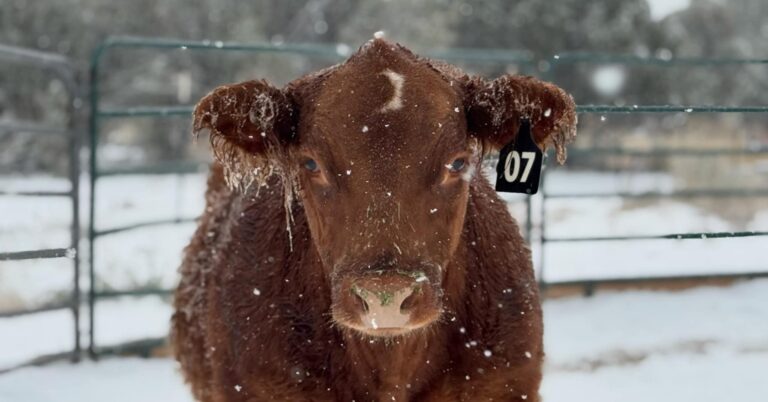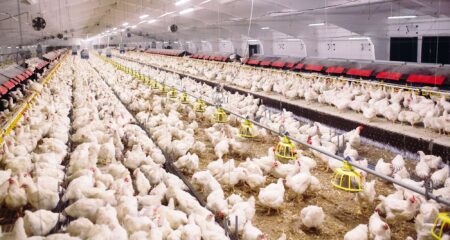The Farmers’ Almanac — not to be confused with the similarly titled Old Farmer’s Almanac — has released its long-range forecast for the winter of 2025-26. According to the folks there, the theme for the season is clear: “Chill, Snow, Repeat.”
For farmers, ranchers, and rural communities across the country, that means it’s time to prepare for a winter marked by dramatic swings and widespread wintry weather.
Although the season officially begins with the winter solstice on December 21, 2025, the almanac warns that cold and snow could arrive much earlier in certain regions, with some areas expected to feel the bite of winter as early as September. The forecast notes that a cold snap could usher in the December holidays under a blanket of chill, setting the tone for what is expected to be a wild ride of alternating freezes and thaws through the season.
The coldest outbreaks are predicted to hit hardest across the Northern Plains and stretch into New England. The Pacific Northwest, particularly Idaho and Washington, is also expected to endure an especially frigid winter. Mid-January is projected to bring a significant cold snap that will affect much of the country, followed by another pronounced outbreak in mid-February. These two periods are shaping up to be the defining cold spells of the season, leaving much of the nation shivering.
Snowfall is also expected to make headlines this winter. New England is forecast to see frequent snowstorms, keeping skiers and snowmobilers happy while giving farmers and rural residents plenty to manage. The Great Lakes region, Ohio Valley, and much of the North Central states are predicted to experience a classic winter wonderland. The Mid-Atlantic states, especially their mountainous regions, will likely see their fair share of snow as well. The Pacific Northwest mountains are gearing up for some impressive totals, adding to the challenge of navigating the season.
Meanwhile, southern portions of the country are bracing for wetter conditions. The Southeast is expected to see average temperatures accompanied by frequent wet periods, with northern Appalachian regions possibly experiencing occasional snow events. Texas and the Southern Plains, including parts of Kansas, Oklahoma, Nebraska, and New Mexico, are expected to have a wetter-than-normal winter. While snowfall will be limited in these areas, residents should be prepared for cold rain and occasional bouts of freezing precipitation. The Southwest is also forecast to experience a wet winter, though with near-average temperatures.

The Farmers’ Almanac has been providing long-range forecasts for more than 200 years, relying on a proprietary formula that incorporates astronomical cycles, solar activity, lunar motion, and environmental fluctuations. While modern meteorologists debate its accuracy, many in the agricultural community continue to use the Almanac as a planning tool, appreciating the guidance it offers for anticipating seasonal trends. For farmers and growers, a forecast like this provides a chance to plan ahead — whether that means ensuring adequate feed and bedding for livestock, checking heating and water systems, or preparing for muddy fields and snow-covered pastures.
In contrast, the Old Farmer’s Almanac’s forecast published earlier this month includes an outlook that is decidedly more tempered: “Mostly mild — with pockets of wild.” According to their forecast, on a national scale, much of the U.S. is expected to experience near normal to slightly milder conditions, though there are notable exceptions. Areas spanning from the Appalachians through the Southeast and Florida, as well as across the Ohio Valley, are slated for colder-than-average temperatures and increased precipitation. Snow totals nationally tend to stay below normal, yet the Carolinas, southern Appalachians, eastern Ohio Valley, southern Rockies, and parts of the eastern Desert Southwest are projected to receive heavier snow than usual. The forecast emphasizes caution in these localized zones, even amid a generally gentle winter vibe.
While both forecasts rely on traditional methods such as melding solar cycles, historical weather patterns, and celestial influences, their regional emphasis creates distinct planning scenarios for ag producers. The Farmers’ Almanac warns of broader, high-risk cold and wintry swings; the Old Farmer’s Almanac suggests a stay-at-home winter for most, with elevated risk in specific, strategic areas.


For those in agriculture and rural communities, these differing views mean one thing: winter preparation needs to be flexible and location aware. Whether bracing for repeated deep freezes or being vigilant in select regions of heightened risk, these forecasts provide valuable guidance, and detailing where to double up on livestock bedding, anticipate ice threats, or monitor snowfall and rain trends that can impact field access, animal safety, or operational logistics.
The 2025 Farmers’ Almanac, with its orange and green cover, is now available in bookstores and retail stores, as well as on FarmersAlmanac.com. Not just for farmers, the almanac reaches a broader audience with husbandry tips, days to cut your hair, quit bad habits, brew beer, and grow basil.


:max_bytes(150000):strip_icc()/IMG_1591-2048x1365-362687ca596f4814967abffff2b4be2c.jpg)
:max_bytes(150000):strip_icc()/SuccessfulFarmingShareImage-8fed6410b43147a19ed5ea1e3243227f.png)





:max_bytes(150000):strip_icc()/IMG_7575-ac6db3006a2145109bcc2df421c7a962.jpeg)

:max_bytes(150000):strip_icc()/Markets-3-Corn-up-3-19bdbeee0041452db8bce0a0f1c8b883.jpeg)